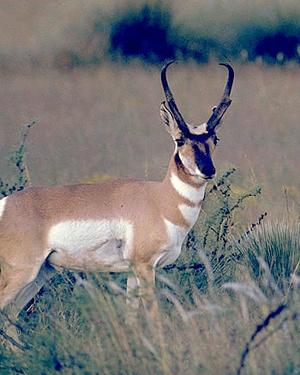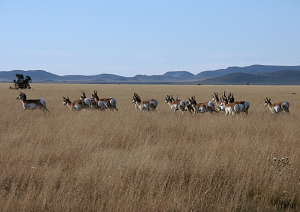Pronghorn Antelope (Antilocapra americana)
Like deer and desert bighorn sheep, pronghorn was a valued prey for the native peoples of the Trans-Pecos. These fleet, hooved creatures favor wide-open terrain where they can easily spot predators and make use of their best defense—their speed and sharp eyesight. Their natural curiosity for unknown objects, such as a waving piece of cloth, has been used by hunters, perhaps prehistoric as well as modern, to lure the animals closer for the kill.
Pronghorn remains have been recovered from both lowland and upland prehistoric sites in the Trans-Pecos, as well as later mission sites. Antelope are also depicted in pictographs, such as a painted image at Hueco Tanks that is interpreted as representing a pronghorn mask.

Like deer and desert bighorn sheep, pronghorn was a valued prey for the native peoples of the Trans-Pecos. Their remains have been recovered from both lowland and upland prehistoric sites in the region, as well as later Mission sites. Photo courtesy Texas Parks and Wildlife Department. |
